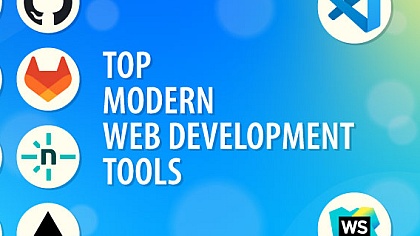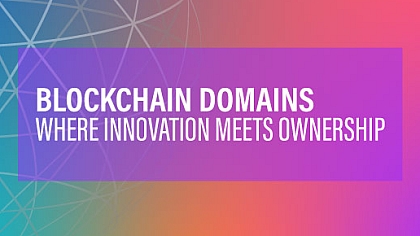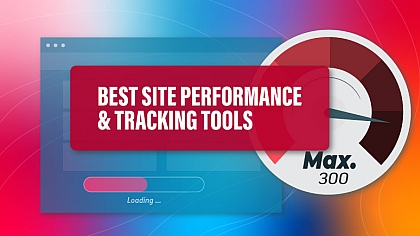
Leveraging Technology for Enhanced Virtual Networking
The digital age has fundamentally altered our methods of connection and networking. The shift from in-person gatherings to virtual platforms has necessitated the adoption of innovative technologies to facilitate meaningful interactions.
This transformation presents an opportunity to leverage technology to enhance virtual networking sessions, making them more engaging, accessible, and efficient.
Embracing the Digital Shift in Networking
The transition towards digital networking represents a pivotal change in the way professionals connect and engage with each other. This shift is a reaction to global circumstances and a proactive embrace of technology's potential to foster more dynamic, inclusive, and accessible professional interactions.
Digital platforms have democratized networking, removing geographical and physical barriers that once limited the scope of professional relationships and collaborations. Through virtual conferences, online workshops, and social media, individuals can now access a global network of peers, mentors, and potential partners from anywhere at any time.
Embracing the digital shift in networking has revolutionized how professionals connect, share, and grow in their respective fields. Several key aspects characterize this transformation:
- Global Connectivity: Digital platforms have removed geographical barriers, allowing for global networking opportunities. Professionals can now connect with peers worldwide, sharing insights and collaborating across borders with ease.
- Inclusivity: The digital shift has made networking more inclusive, enabling participation from individuals who might have been excluded from traditional, in-person events due to location, mobility, or cost constraints.
- 24/7 Networking: Unlike physical events bound by time, digital networking platforms offer the flexibility of connecting anytime, anywhere. This around-the-clock accessibility ensures that professionals can engage with their network conveniently.
- Data-Driven Insights: Digital tools provide valuable data on networking activities, offering insights into engagement patterns, interests, and the effectiveness of networking strategies. This data can be used to tailor future events and interactions for maximum relevance and impact.
- Innovative Tools for Engagement: The use of advanced technologies like AI for matchmaking, VR for immersive experiences, and real-time interaction features enriches the networking experience, making it more engaging and productive.
The digital shift in networking is not just a trend but a new norm, offering unprecedented opportunities for professional growth and collaboration in a more connected, accessible, and data-informed landscape.
Interactive platforms that simulate physical venues provide immersive networking experiences. These platforms allow attendees to navigate virtual spaces, join tables or rooms for specific topics, and interact with others more naturally and engagingly. Additionally, real-time polling and Q&A tools encourage active participation, making sessions more interactive and dynamic.
Optimizing Engagement with Advanced Features
Optimizing engagement in virtual environments requires a blend of creativity and technology, where advanced features play a pivotal role. The introduction of gamification elements into online platforms, much like those found in a Hopin alternative, is a prime example of how engagement can be enhanced.
By integrating challenges, rewards, and competitive elements, participants are encouraged to engage more deeply with the content and with each other, transforming passive attendance into active participation.
- Moreover, the use of augmented reality (AR) and virtual reality (VR) technologies elevates the immersive experience of virtual events. These technologies create a sense of presence and interaction that closely mirrors real-life scenarios, making virtual networking sessions and conferences more engaging and memorable. Participants can explore virtual spaces, engage in lifelike interactions, and experience content in a more dynamic and impactful way.
- Artificial Intelligence (AI) also plays a crucial role in optimizing engagement by facilitating personalized experiences. AI can analyze participant behaviour and preferences to tailor content, recommend networking opportunities, and predict engagement trends. This personalized approach ensures that each participant receives relevant and engaging content, maximizing the value of their virtual experience.
- These advanced features are transforming the landscape of virtual engagement, offering innovative ways to captivate audiences and foster meaningful interactions in digital spaces. As we continue to explore and integrate these technologies, the potential to create more engaging and effective virtual environments is boundless.
Strategies for Effective Virtual Networking
For virtual networking sessions to be successful, organizers must adopt strategies that leverage technology effectively. Pre-event networking opportunities, such as access to a participant directory with messaging capabilities, allow attendees to plan their networking activities in advance and set up meetings.
Optimizing engagement within virtual environments is a crucial aspect of modern digital strategy, leveraging advanced features to foster interactive and memorable experiences:
- Gamification: Incorporating game-like elements such as points, badges, and leaderboards to encourage participation and reward engagement. This approach not only makes the experience more enjoyable but also stimulates competition and collaboration among participants.
- Augmented Reality (AR) and Virtual Reality (VR): Utilizing AR and VR technologies to create immersive experiences that simulate real-world interactions. These tools can transport participants to virtual spaces, making events feel more lifelike and engaging, thereby enhancing the sense of presence and interaction.
- Artificial Intelligence (AI): Employing AI to personalize the user experience based on behaviour and preferences. AI algorithms can suggest relevant content, predict engagement levels, and facilitate matchmaking among participants with similar interests, ensuring a more tailored and meaningful engagement.
- Real-time Interaction Tools: Implementing live polls, Q&A sessions, and chat functionalities to enable direct communication and feedback. These tools help maintain a dynamic dialogue between hosts and participants, increasing engagement through active participation.

These advanced features represent a shift towards more interactive, personalized, and immersive virtual experiences. By integrating these technologies, organizers can significantly enhance participant engagement, making virtual events more effective and enjoyable.
During the event, structured networking sessions with specific themes or industry focuses can facilitate more meaningful connections. Providing clear instructions and support for using technology ensures that all participants, regardless of their technical proficiency, can engage fully in the session.
Post-event, technology can continue to play a role in sustaining the connections made. Follow-up emails with links to session recordings, resources, and forums for ongoing discussions can help maintain the momentum of networking efforts.
Challenges and Considerations
While technology offers vast opportunities to enhance virtual networking, it also presents challenges. Privacy and security concerns are paramount, requiring organizers to choose platforms with robust security measures. Additionally, the risk of "Zoom fatigue" means that sessions must be designed to be engaging and provide value without overwhelming participants.
The Future of Virtual Networking
The future of virtual networking looks promising, with continuous advancements in technology paving the way for more sophisticated and immersive experiences. The integration of AI, AR, and VR into networking platforms is set to redefine the limits of virtual interactions, offering even more compelling alternatives to traditional networking methods.
Leveraging technology to enhance virtual networking sessions is essential in today’s digitally connected world. By embracing innovative tools and strategies, organizers can create engaging, efficient, and inclusive networking experiences that rival in-person events.
The evolution of virtual networking technologies is not just a testament to human ingenuity in overcoming challenges but also a glimpse into the future of professional interactions. As we continue to navigate this digital landscape, the potential for creating meaningful connections and fostering global collaboration is boundless.














